The Alchemical Bestiary: Symbolic Figures of Transmutation

In ancient grimoires, amid frescoes and pages covered in enigmatic signs, strange animals appear: dragons, lions, ravens, salamanders, unicorns. They are not there to decorate or frighten, but to teach. These creatures are messengers of occult knowledge, metaphorical embodiments of the forces at work in matter... and in the soul. The alchemical bestiary is not a fantasy zoo: it is a cryptic mirror of the Great Work.
Alchemy, in its quest for the Philosopher’s Stone, did not separate chemistry from the sacred. Every chemical transformation echoed an inner transformation. That’s why animals play such a central role: they guide, protect, and test. Some are real, others mythical, but all represent a stage of the transmutation process. They are the symbolic flesh of the Work in black, white, and red. And sometimes, they also — in coded language — designate a very real substance.
The Raven – The Original Shadow (Nigredo)
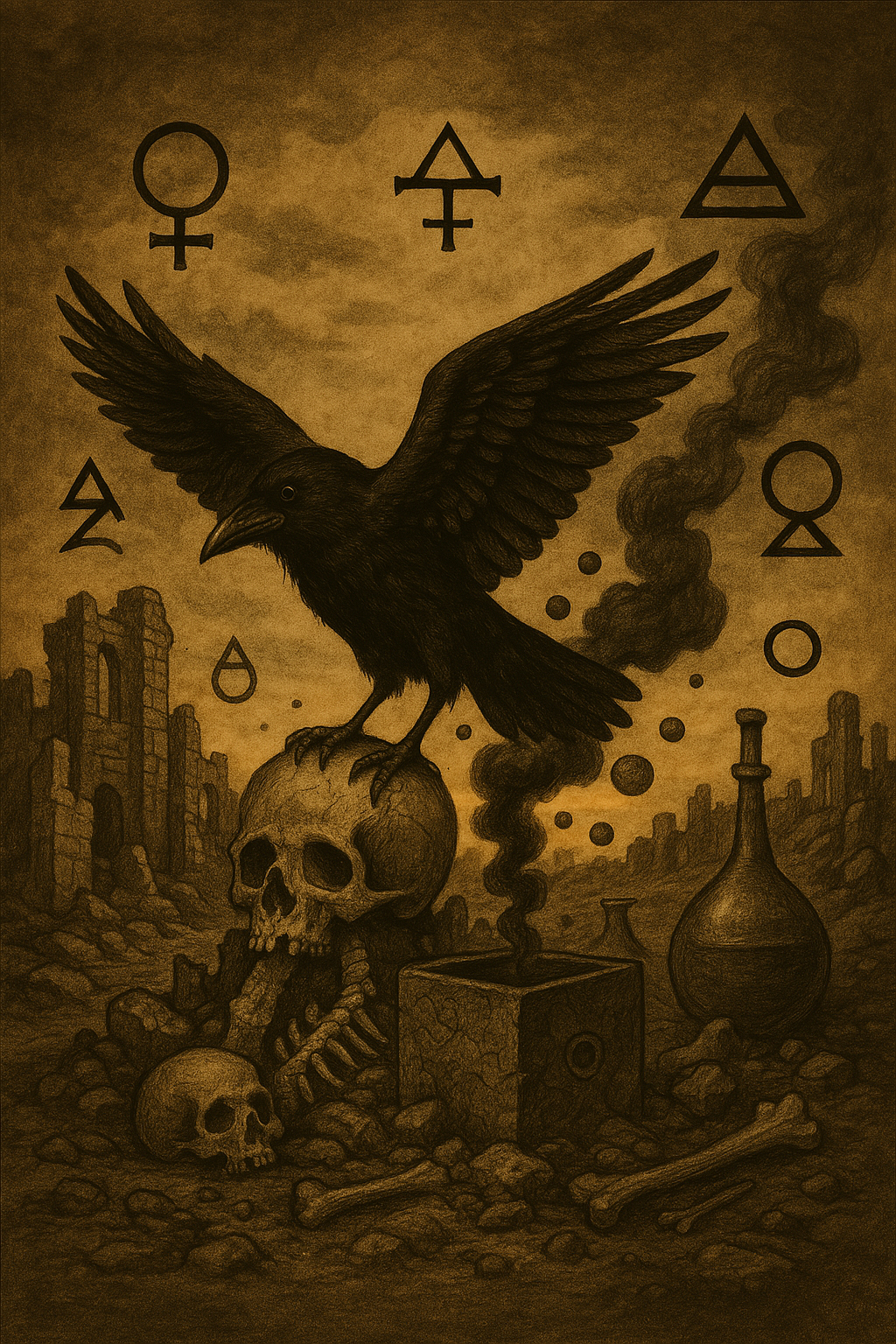
The Raven – Symbol of the putrefaction phase (Nigredo) in operative alchemy.
Before light, there is night. Before form, chaos. Before gold, the raven.
A liminal animal between worlds, the raven haunts the abysses of the Great Work. It is found perched on the bones of a ruined world, messenger of battlefields, witness to the necessary disaster of transformation. In alchemy, it symbolizes Nigredo, the black phase, that primordial darkness every seeker of truth must pass through. It is the shadow cast by consciousness when it begins to look inward.
In hermetic texts, the raven is often shown hovering above decaying matter or perched on the sealed vessel of the alchemist. It does not initiate the process, but it announces it. Its black color is no accident: it evokes crude matter, the first unrefined substance subjected to fermentation and decay. The raven is the black dawn of the Work, the phase where one unlearns, where everything collapses to be rebuilt. It represents initiatory death, the shedding of the false self, the renunciation of comforting illusions.
In connection with mystical tradition
Among Nordic peoples, the raven accompanies the god Odin: Hugin and Munin, his two winged familiars, represent thought and memory. They travel the world daily to bring back the truth. In Celtic mythology, the raven is linked to Morrigan, goddess of war and prophecy. A threshold animal, it watches over the passages: between life and death, between ignorance and knowledge.
For the alchemist, these were not just stories — they encoded a hidden language. The raven is not only a harbinger of endings; it also announces new beginnings. Where it lands, something must die for something new to be born. It is the funeral wind blowing over old identities, sterile beliefs, and ego masks.
Alchemical and chemical reading
In alchemical iconography, the appearance of the raven is called “caput corvi” – the raven’s head. It is one of the most important signs for the operative alchemist: it indicates that the matter’s putrefaction has begun. In the lab, this might show as a black mass at the bottom of the vessel, a smell of fermentation, or dark coloration throughout. Historically, this was caused by heat acting on enclosed organic matter — a dry distillation that blackens, smokes, and decomposes.
Chemically, it can be associated with an initial carbonization, a slow burn where volatile elements evaporate, leaving a black residue — a “dead earth.” But this black earth is precious. It’s the foundation of everything to come.
Psychological and spiritual reading
In the path of inner alchemy, the raven embodies sacred depression, the moment when the soul, confronted with itself, can no longer flee. It’s a painful phase marked by confusion, loss of bearings, and the feeling of being nothing. Yet this journey is essential. One must descend into the unconscious, face the lurking monsters, finally see what was once denied.
What Jung called “confrontation with the Shadow,” alchemists experienced as the descent into the darkness of Nigredo. It’s the moment when one agrees to die symbolically — to let go of the socially built self, the wounds, and the habits. The raven is the one who stares into our eyes when we hit bottom.
But it doesn’t stay. It guides. It accompanies. And when its task is complete, it flies away — making way for the nascent light of Albedo.
The Green Lion – The Solar Devourer (Solve)
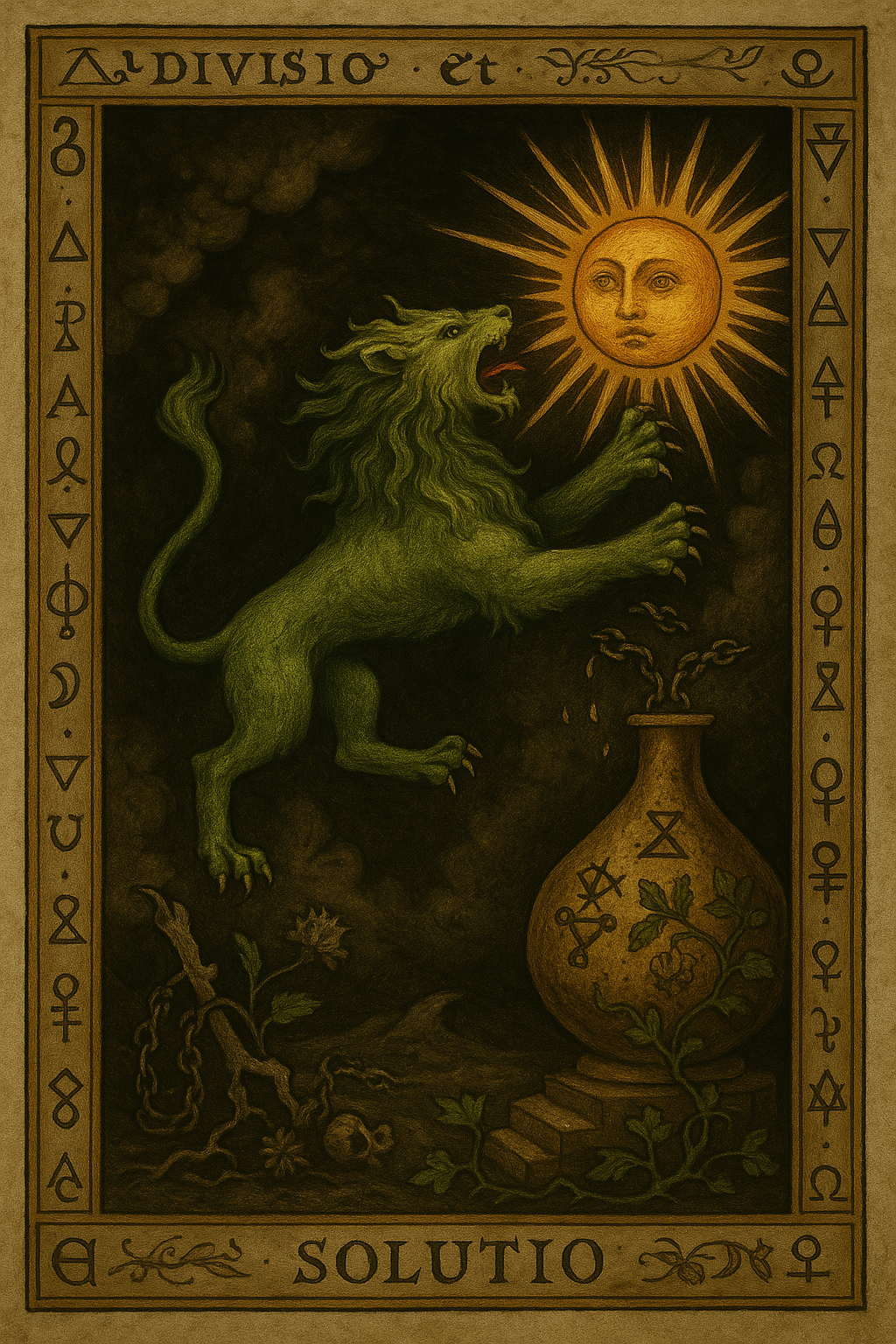
The Green Lion – Devourer of the Sun, symbol of Solve and alchemical dissolution.
It leaps without warning, roaring at the heart of the alchemical vessel, claws raised to the sky: the green lion is a roaring enigma, a fierce force in the service of transmutation. It is one of the most mysterious figures in the alchemical bestiary, and one of the most meaningful.
In ancient manuscripts, it is often depicted devouring the Sun, jaws wide open, consuming a radiant star. A striking, almost heretical image, as it defies norms: why would a lion — a royal, earthly emblem — dare devour the sacred sun? Because this lion is no ordinary animal. It is the imagined form of a wild, active, corrosive chemical force: vitriolic acid, capable of dissolving even gold, the symbol of ego, power, and the shining self.
A symbol of raw and primordial energy
The green lion embodies nature’s vitality in its purest form: uncivilized, unrationalized, wild and untamable. It is not a monster: it is life energy itself, before it is channeled. This force can be terrifying, as it disrupts structures. It does not destroy for pleasure, but because destruction is the condition for renewal. In alchemical tradition, it is the guardian of the mystery of dissolution. It attacks what is rigid. It crushes noble metals, overturns illusions of purity. It shows that nothing is untouchable. And most importantly, that spiritual gold can only be born from dissolved gold — meaning, a shattered ego.
The chemical equivalent: VITRIOL
Behind this symbol lies a very material reality: the green lion is sulfuric acid mixed with iron sulfate, also called green vitriol. This acid, used by alchemists since antiquity, is capable of dissolving gold — the noblest of metals. This power made it a substance both feared and revered.
In iconography, the green color refers to the visual aspect of ferrous sulfate (vitriolum viride), but also to alchemical vegetation, that is, the force of growth, life emerging from chaos. The green lion is therefore the agent of both putrefaction AND germination. It is not an acid of death; it is an acid of rebirth.
It is also directly linked to the famous alchemist motto: V.I.T.R.I.O.L. – Visita Interiora Terrae, Rectificando Invenies Occultum Lapidem (“Visit the interior of the Earth, and by rectifying, you will find the hidden stone.”)
This lion urges you toward this radical exploration of the self, this immersion in corrosive inner depth.
Spiritual and psychological reading
On the inner plane, the green lion is the explosion of repressed emotions, ancient anger, primal desires. It is the instinctive force rising when one finally opens the door to the unconscious. It can be frightening because it attacks everything false: certainties, masks, rigid beliefs.
But what it devours, it transforms. It is a lion-doctor, though it scratches first. It is the wild healer, the one who does not use sweet words, but roars of truth. It tears you from comfort so you can be reborn whole.
Psychologically, it represents the moment when the dissolution of the false self becomes necessary: when one feels that their old self can no longer contain them, when the shell cracks under the pressure of something larger. This moment may resemble a personal crisis, a loss of bearings, a collapse. But it is not an end: it is the alchemical “solve”.
Between gold and light
What does the green lion devour? The Sun. Why? Because the Sun symbolizes the ego, the consciousness full of its radiance, but often blinded by itself. It is not the light it destroys: it is the illusion of light. What it makes possible is a deeper light, one not of the surface, but of the union of opposites. What it teaches us is that before one can shine, they must dissolve.
The journey through the green lion is brutal but necessary. Without it, there is no passage to Albedo, no purification, no conjunction possible. It is the initiatory trial par excellence: the one where we learn to die voluntarily to what we thought we were, to discover who we truly are.
The Dragon – Guardian of Chaos, Protector of the Secret
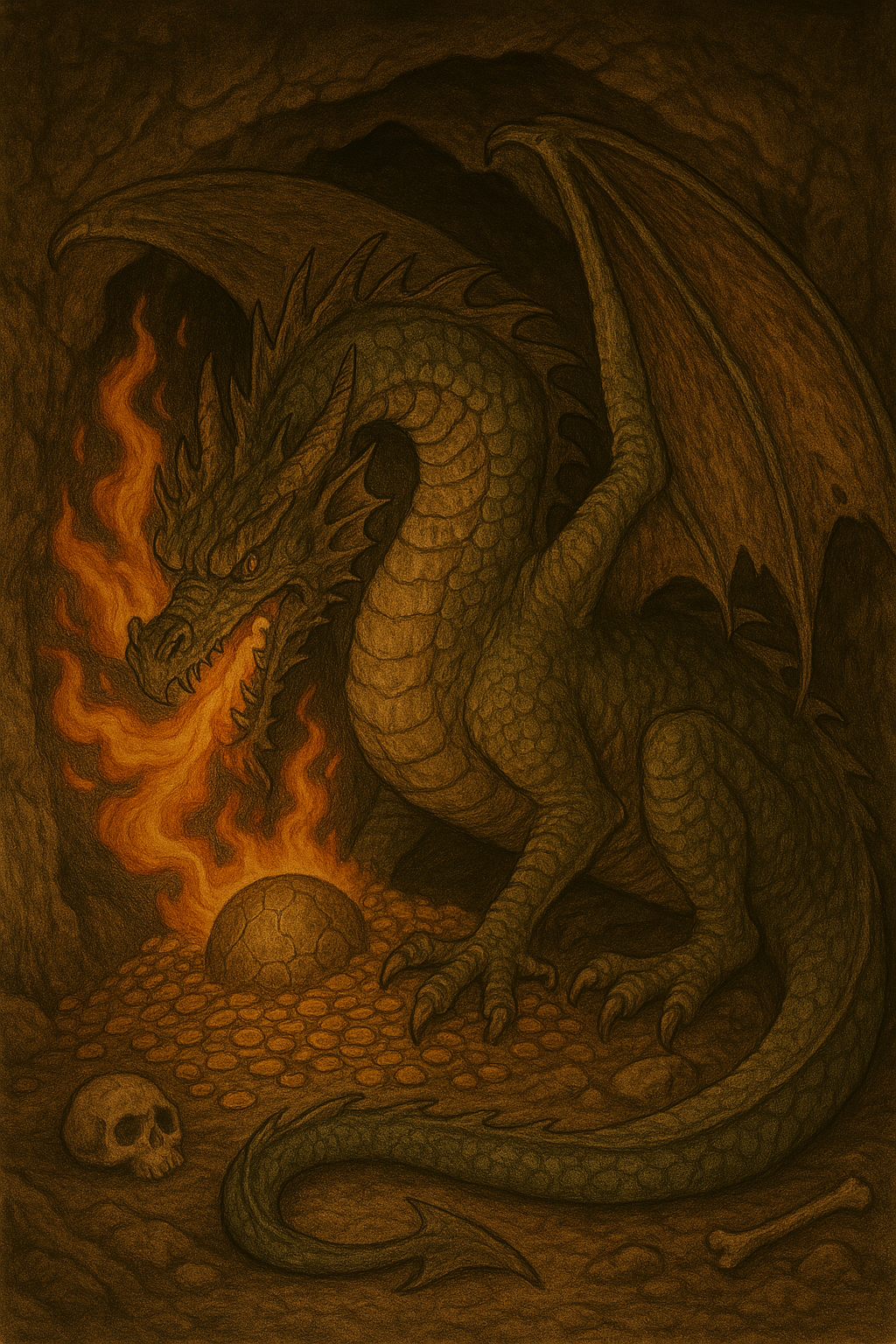
The Dragon – Guardian of Chaos and Protector of the Secret, the ambivalent force of the alchemical Work.
In all cultures of the world, the dragon appears as a founding, formidable, and sacred entity. In alchemy, it is primordial matter, raw, undifferentiated, both poison and remedy, fire and darkness. It embodies the power of nature untamed, the original chaos from which everything can be born... or perish. It is the guardian of the treasure, but also the fire that burns those who approach unprepared.
The alchemical dragon is ambivalence made flesh: it is both the beast to conquer and the key to transformation. It is the terror of the ego, but also the guardian of the Philosopher's Stone. It can be black, red, or green, depending on its phase: black when it is raw matter, red when it becomes the transmuting fire, green when it is vital poison. It is the Work in its entirety.
Myth, symbolism, and hermetic vision
The dragon is the direct heir of the primordial serpent, Ouroboros, the one who bites its tail. It is the cycle of life, death, and rebirth, the consciousness folding in on itself to be reborn from its ashes. In many traditions, it lives in a deep cave, coiled around a treasure or an egg: an archetypal image of the unconscious containing untapped potential.
In alchemy, the dragon is often depicted pierced by arrows, struck by the alchemist’s sword, or burned in its own fire. These images are not sadistic: they symbolize the effort required to face what is wild within us. The dragon is our animal part, our libido, our power of destruction... but also of creation.
It is also linked to the four elements: it breathes fire, swims in water, soars in air, crawls on earth. It is undifferentiated totality, the alchemical chaos in its living form. Its breath can destroy everything — or purify everything.
Operative Interpretation: Philosophical Mercury
In the operative tradition, the dragon represents mercury — not just the liquid metal, but the mercurial principle, that is, the mediator between the fixed and the volatile, the spirit and matter. It is the substance that contains all others.
Sometimes, it also signifies impure sulfur, both an active and devouring principle, charged with energy, but unstable and dangerous. In some manuscripts, it is referred to as the "fiery dragon" or the "red dragon" to signify the incandescent force of sulfur, which, if uncontrolled, corrupts everything.
In other versions, the dragon is the prima materia, the unworked raw material — this black, viscous, sometimes fetid residue from decomposition. It must be “killed,” symbolically, to extract its pure essence. The dragon's blood then becomes tincture, elixir, living matter.
Psychological Dimension: The Archaic Shadow
Encountering the dragon is facing the deep unconscious, what Jung called “the archaic shadow.” It is confronting repressed instincts, traumas, primal impulses. The dragon does not represent evil — it represents what we have repressed because it was too strong, too dangerous, too unacceptable.
In an inner vision, the dragon may appear in dreams as a figure of opposition or fear. But it is never there by chance: it guards a threshold, forbidden knowledge, a truth we are not yet ready to face. Fighting it is not killing it — it is transmuting it.
And when integrated, the dragon becomes an inexhaustible source of inner strength. Its breath is no longer destruction, but energy. Its fire becomes light. Its body becomes a temple.
The Initiatory Trial of Fire
In many esoteric tales, the hero becomes who they are only after facing a dragon. This is not a coincidence: the dragon encounter marks the alchemist’s passage from the profane world to the initiated world. It is the trial of fire, the one that consumes all that is false. It is the final guardian before the King's chamber.
The dragon does not disappear: it becomes an ally. It is the one who, once defeated, opens the way to solar consciousness, to the philosopher's gold, to the mastered sacred fire. The alchemist who tames their dragon is no longer a student, but the magician.
The dragon is therefore the most complete of alchemical symbols: it contains fear, power, dissolution, fertilization, regeneration. It is chaos at the beginning, and the key to wisdom at the end.
The Salamander – The Spirit That Dwells in Fire
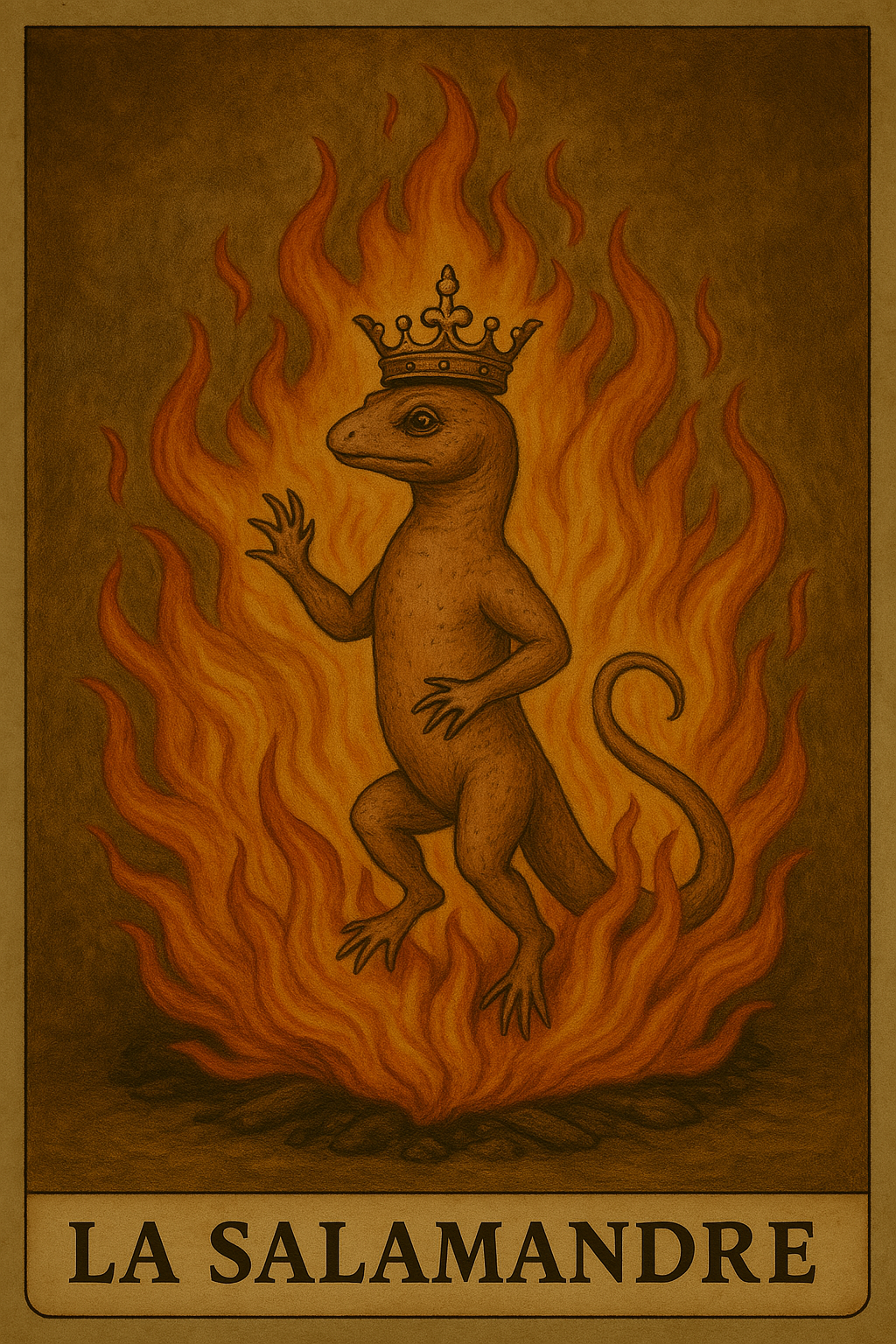
The Salamander – The living spirit of alchemical fire, master of the inner flame and guide of purification.
A walking paradox, a living enigma, the salamander is one of the most mysterious creatures in the alchemical bestiary. Small in size, but with immense symbolism, it traverses the ages as a survivor, not from fire, but in fire. It is said to be able to dwell in flames without suffering from them. It does not flee from them, it embraces them. And this is precisely what makes it a powerful symbol of spiritual purification and mastery over the inner fire.
In alchemical imagination, the salamander is not the fragile animal found in humid forests. It is conscious fire, the soul of the flame, the spirit that dances at the heart of combustion without ever being extinguished. It is sometimes depicted crowned, sometimes nude and pure, sometimes at the center of a symbolic blaze, peaceful amidst the turmoil, indestructible in the trial.
The Transformative Fire, Not Destructive
Unlike the dragon or the green lion, the salamander does not destroy. It transfigures. It inhabits fire to better understand it, to reveal its essence. Fire here is not a destructive blaze: it is the subtle, alchemical fire, the one of slow distillation, refinement, and ascension. The salamander is not the raw flame of anger or chaos: it is the flame of consciousness.
In the hermetic tradition, the salamander symbolizes mastery over passions, the soul’s ability to endure the burning trials of life without being consumed by them. It proves that fire, though intense, can become an ally if we integrate it rather than fight it. It is the archetype of the sage who, having passed through the hells of matter and mind, can remain serene in the furnace of existence.
Operative Reading: Alchemical Fire
In the laboratory, the salamander represents the constant, regulated fire necessary for distillation, sublimation, and coagulation. It is not the initial blazing fire of Nigredo nor the corrosive fire of the green lion, but the inner fire of the athanor, the one the alchemist must maintain with precision, not too strong, not too weak.
It is this secret fire — sometimes called ignis naturae or philosophical fire — that the salamander embodies. An invisible fire, but one that does all the work. It is the living allegory of the fire of the spirit, that subtle fire that heats without burning, that transforms without destroying. It is the heat of intention, the light of prayer, the flame of disinterested love. A sacred fire.
Inner Reading: Crossing the Flames of Trial
On the inner path, the salamander appears when one is going through an intense but purifying trial. It may be a phase of grief, loss, or deep questioning — but lived consciously. Unlike the raven or the green lion, this step does not destroy everything. It refines.
The salamander teaches you to stay calm at the heart of the trial. It invites you to cross the pain without contracting, to breathe in the heat of discomfort. It is the guardian of the inner fire: that of will, enthusiasm, and awakened presence.
Psychologically, it embodies the luminous resilience, the ability to transform the fire of emotions into light of consciousness. In a dream, if you see it crossing the flames, it may be because you are ready to grow in the trial, to no longer flee from it, but to nourish yourself with it.
An Initiatory Flame
There is an alchemical saying: "What cannot bear fire cannot be true." The salamander, however, lives in fire. It is the tested truth, the purified essence, the gold that no longer fears fusion.
In this sense, it is an initiatory figure par excellence: not spectacular, but essential. It does not roar, it does not burn, it illuminates. It watches over the alchemist in the athanor, reminding him that any fire can become sacred fire — if the intention is right, and if the heart is stable.
The Unicorn – Subtle Light and Alchemy of the Heart
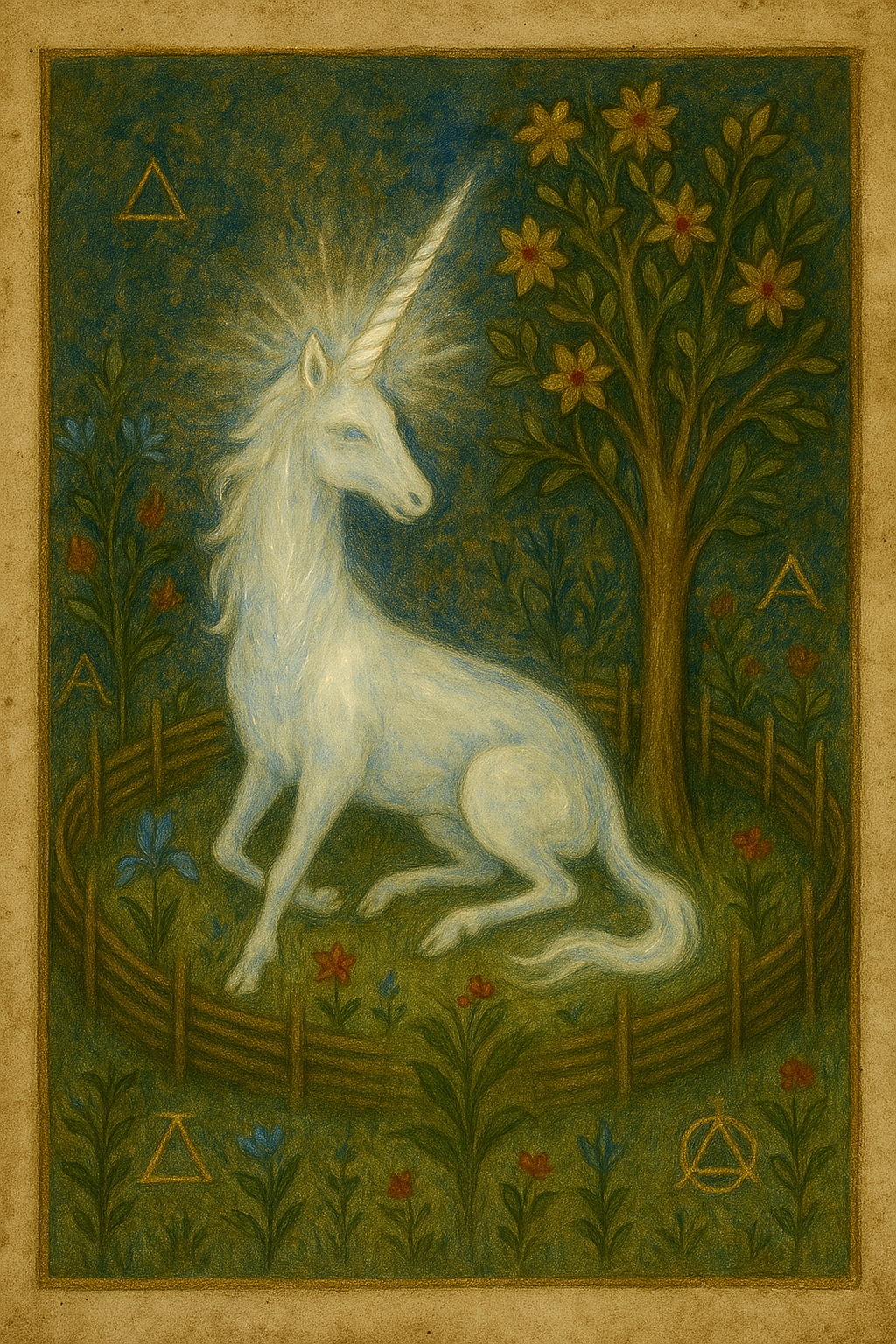
The Unicorn – Manifestation of transmuted purity, messenger of the soul reconciled with inner light.
Evoking the unicorn is to bring into the alchemical bestiary a presence that is both fairy-like and sacred. It is not the sweet and decorative creature of modern tales: in alchemy, it is the spirit refined to the extreme, the crystallization of a spiritual ideal. It is the companion of pure souls, but also the fruit of a long inner work, a rare essence that only shows itself to those who have traversed the darkness and mastered the fire.
A creature of light and radiance, it does not inhabit matter, but the ether. It appears, disappears, and can only be approached in silence, in contemplation, sometimes in the pain of renunciation. It is the symbol of recovered purity, but not naive purity: a purity earned, transmuted, and fertilized by trials.
A Mystical Messenger
The unicorn has long been considered an allegory for Christ or the Virgin, but alchemists see it as a figure of the soul reintegrated with its original light. In medieval tapestries or hermetic engravings, it is often depicted lying down, peaceful, near a tree or a flowering circle: symbol of inner fulfillment. Its single horn is the image of the direct channel between heaven and earth, between spirit and body, between the higher Self and incarnation.
It is said that it can only be captured by a virgin — which, in the language of symbols, does not refer to a chaste woman, but a purified spirit, free from any will to dominate. The unicorn only lets itself be touched by what is selfless. It is the reflection of the free heart.
Operative Reading: The Final Distillation
In matter, the unicorn is difficult to grasp. It is neither metal, nor salt, nor sulfur. It is the sublimation, the fragrance, the lightest of spirits extracted at the end of the Great Work. It could be associated with the final distillation, that pure and crystalline vapor that no longer contains impurities. It is the result of fully rectified matter, of a being rid of its dross.
In certain alchemical treatises, the unicorn is linked to the spirit of wine (distilled ethyl alcohol), considered the quintessence extracted from fermentation. It is therefore the light that resides within the fermented shadow, the beauty that emerges from accepted pain, the spiritual elixir.
Inner Reading: Purity Recovered, Absolute Demand
Psychologically, the unicorn represents the awakening of the higher heart, the reclaiming of conscious innocence. It is what we become after traversing the darkness, facing the fire, speaking with the dragon, and taming its shadows.It is not a step on the path: it is the fruit of the path.
It teaches us that true purity is not the absence of sin, but the presence of light. That perfection is not a fixed state, but an inner movement towards integrity. It urges us to refuse compromise, to no longer betray ourselves, to choose what elevates.
The unicorn does not need to fight. It shines. And this radiance heals, transforms, and inspires. It is the highest note of the inner song.
A Rare and Precious Presence
In the laboratory of the soul, the unicorn only appears when the vessel has become a temple. It is the luminous signature of the inner Great Work. The alchemist who sees it — not with the eyes, but with the soul — knows that the path is nearing its end.
But it does not stay. It passes. It crosses. And leaves in its wake the certainty that beauty is possible, even after hell. That light is not an illusion, but the innermost core of all things.
The Ouroboros – The Serpent Who Bites Its Tail
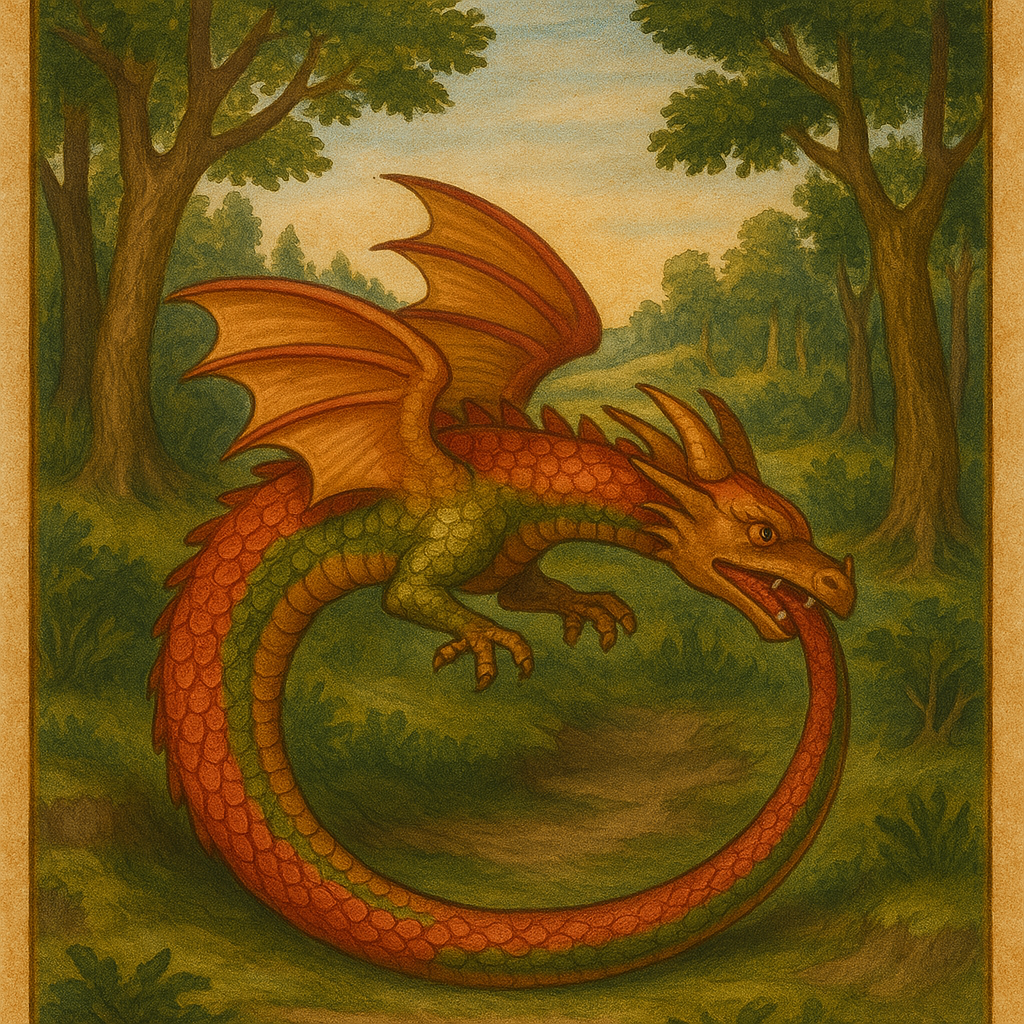
The Ouroboros – Symbol of perpetual regeneration, unity of opposites, and the eternal Great Work.
It spins on itself, in a perfect loop. It bites, swallows, digests itself. It is life feeding on life, death giving birth to birth. The Ouroboros, the quintessential alchemical serpent, is the seal of the Great Work, the oldest and most complete symbol of continuous transformation. It is not a stage: it is the whole circle, the container of everything.
Present since the Egyptian hermetic texts to the medieval grimoires, the Ouroboros has never ceased to fascinate. Why? Because it holds a paradox: it is both destruction and regeneration, end and beginning. It does not move forward: it returns. It does not evolve: it transcends time.
Circular Time and Unified Consciousness
The Ouroboros, in its simplest form, is a serpent biting its tail. But this image hides a radical vision of the universe. It is no longer a linear path with a beginning and an end, but a continuous cycle, where each end is a germination, where each death is a matrix.
It represents the fundamental non-duality: there is no longer any separation between inside and outside, between the above and below, between subject and object. It is the fusion of opposites, the androgyny of the world, the regained unity. That is why some manuscripts depict it in black and white, half light, half dark — the image of the union of Solve and Coagula, of chaos and order, of soul and body.
It is also the guardian of sacred time, the time that does not flow, but pulses. In magic, it is the ritual circle, the absolute protection. In alchemy, it is the hermetic vessel itself, containing the Work, locking in the fire, salt, sulfur, and mercury in their eternal dance.
Operative Reading: The Cycle of Matter and Spirit
On a chemical level, the Ouroboros can be read as the cyclic repetition of alchemical operations: calcination, dissolution, separation, conjunction, fermentation, distillation, coagulation... then back to the beginning. The alchemist does not perform just one transmutation: he refines with each turn, like distilling wine in a spiral, becoming purer with each cycle.
It can also represent the philosophical mercury, this unstable substance, that rises, falls, volatilizes, then fixes — always in motion. It is the living spirit of alchemy, the agent of eternal change. And the Ouroboros reminds us that this work never ends: we can always descend again into the work of blackness to begin again with more awareness.
In some manuscripts, it is associated with the process of circulatio: a method where matter is distilled in a loop, again and again, until its ultimate refinement. It is the heartbeat of the laboratory, the sacred pulse of matter.
Inner Reading: Perpetual Rebirth
Psychologically, the Ouroboros is the symbol of individuation, the process by which the soul redefines itself by integrating its own opposites. It teaches that the spiritual path is never completed — and never will be. What we thought we had overcome will return, in another form, to be seen more deeply.
It invites us to embrace our cycles: our losses, our rebirths, our contradictions. It teaches us that what returns is not a regression, but an opportunity for integration. It asks us to stop fleeing repetition — and to make it a sacred act. Each return is a deepening.
The Ouroboros is also the infinite forgiveness, the one we give to ourselves, again and again, until inner unity is reached. It is the patience of the Great Work, the spiral that is never exactly the same, even if it seems to go in circles.
The Final Seal of the Work
In many engravings, the Ouroboros surrounds a text, a symbol, an alchemist, a mandala. It seals the Work, like a wedding ring between the visible and the invisible. When it appears, it means the process is complete — or can begin again. It is the well-kept secret, the guardian of the threshold that is not a threshold, but a center.
Whoever understands the Ouroboros no longer fears death, nor starting over. He becomes an alchemist not by will, but by essence. He has become himself the vessel, the matter, and the fire. He has become the Work. And he will begin again, to refine gold into light.
The alchemical bestiary is not a simple catalog of ancient symbols. It is a living map, organic, of the energies that flow through us. Every animal we have encountered — the raven, the green lion, the dragon, the salamander, the unicorn, and the Ouroboros — is a mirror of an inner process, a face of ourselves in transmutation. They are the guardians of a forgotten language, that of the soul in search of unity, that of the body seeking to become a temple.
The Inner Bestiary
These creatures teach us that the Great Work is not a linear ascension but a spiral, a sacred fire that consumes us to better reveal us. They show us that dissolution is necessary for rebirth, that fire is not the enemy, that light is born from chaos, and that the All already resides within us.
Through them, alchemy ceases to be a mere philosophical system: it becomes what it has always been — a path of self-knowledge, of the other, and of the universe. A path that passes through symbolism, active dreaming, and embodiment.
But these animals are not alone. They live at the heart of an even vaster kingdom, populated with magical plants, living stones, occult inks, and elemental forces. After the breath of mythical beasts comes the breath of herbs and smokes.
For while animals embody instincts and trials, witches' plants, in contrast, whisper in the shadows of our nerves, waking ancient memories, opening portals between worlds.











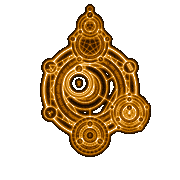





Comments : 0